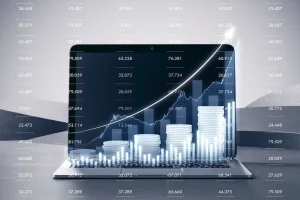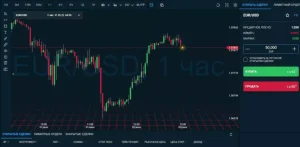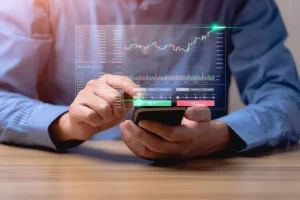The Inner Circle Trader (ICT) methodology provides a distinctive perspective for analyzing market behavior, making it a favorite among active traders. This approach concentrates on the essential concept of distinguishing between buy side and sell side liquidity. Today, we’ll explore these fundamental principles and their practical applications, offering you insights into mastering the markets.
What is Buy Side and Sell Side Liquidity?
We differentiate two types of investment professionals depending on their primary purpose — buyside vs sellside liquidity suppliers. Buy-side investment managers, pension and hedge funds acquire assets to provide returns to their customers or beneficiaries.
Sell-side institutions, encompassing investment banks, consultancy firms, and corporations, serve as intermediaries within the financial system. They facilitate buy-side organizations’ acquisition and issue of securities. Unlike buy-side, the intrinsically sales-driven structure of sell-side businesses often leads to a greater variety of entry-level positions.


Turnkey Brokerage Solution For Your Business
Get the most profitable fully licensed fx/crypto brokerage software or ready-to-operate business in 48 hours. Best-in-class web & mobile trading platforms, sales-driven CRM, full integration with MT4/5, and 150+ payment providers.
Sell-Side
The sell-side acts as intermediaries essential for facilitating the issuance and subsequent sale of securities. These market makers act on behalf of corporations seeking to raise capital. By leveraging their expertise, they assist enterprises in securing the necessary funding.
Imagine that a company building a new factory is short of money. To raise funds for the project, it might partner with an investment bank to issue bonds or stocks, like selling little pieces of ownership. These investment banks analyze the company’s value to attract investors and create marketing materials to make the investment sound appealing.
Buy-Side
The buy side involves numerous organizations. It includes professional asset managers and individual investors with capital available for investment in securities — from shares to derivatives. The former manages vast pools of capital on behalf of private investors and institutions, and the latter directly invests their capital in the market through brokerage accounts.
Imagine a fund manager who invests money from well-off customers in green energy firms. They’re always looking for new investments. An investment bank might contact them about a company going public (IPO) in the clean energy sector. After thorough analysis, the manager may decide to invest in the IPO, essentially directing capital from the buy side (investors) to the sell side (investment bank) to participate.

ICT Trading Strategy
ICT trading constitutes a unique analytical framework for dissecting the intricacies of the markets. The system assumes that technical indicators, like stop-losses, are of considerable value in identifying convenient entry points and predicting market movements. If you closely monitor liquidity sweep indicators, you can mimic the patterns of institutional investors, commonly called “smart money” participants.
ICT is not a prescriptive, universal solution, unlike some rigid trading systems or programs. It offers a flexible and adaptable toolkit with a variety of approaches, models, and conceptual frameworks. The versatility allows for the customized adaptation of the principles to diverse market conditions and individual trading styles.
ICT Concepts
Such trading methodology is grounded in several fundamental concepts. They provide a framework to interpret market behavior and identify potential trade opportunities:
- Displacement. It signifies a pronounced rise in the purchasing or selling pressure. The result — a massive price movement. Such an occurrence can manifest as a price gap and a possible pattern shift, frequently following a breakout from a market liquidity zone.
- Inducement. It involves targeting short-term price extremes where liquidity levels are concentrated. The objective is to set off stop-loss orders set by market participants, thereby generating price movements that propel the value of the assets to the prevailing long-term trend.
- Optimal trade entry points. They constitute the most strategically opportune moments for initiating a trade. Practitioners leverage the Fibonacci retracement tool to pinpoint the entry zones.
- Market structure shift levels. They pinpoint critical junctures where recent patterns exhibited a reversal. The levels frequently serve as indicators of a possible move in the market direction.
- Fair Value Gaps are anomalies that signify price discontinuities. Proponents closely track the disparities, as they may exert a significant influence on price action. FVGs are hypothesized to be magnets, potentially attracting price swings to close the gap and achieve balance.
ICT prioritizes an inside-out grasp on liquidity. If a trader meticulously monitors buy side vs sell side liquidity, they can get key findings and sharpen their ability to adjust to market shifts. In a nutshell, ICT presents a holistic framework intended to break down the complex interplay of markets and emulate established trading practices. The fruitful implementation of the concepts holds the promise to drastically spruce up your performance.
Differences Between Buy Side vs Sell Side
In essence, both buy side vs sell side liquidity represent a symbiotic ecosystem. They play a critical role but with distinct objectives. These are the primary differentiating factors:
- Divergent goals. The buy-side puts an emphasis on long-term investment strategies to achieve superior returns for their beneficiaries. Conversely, the sell-side prioritizes short-term profitability through market-making and transaction fees.
- Client focus. Buy-side entities typically serve institutional investors with long-term investment horizons, such as pension funds and endowments. Sell-sides target a broader range of clients — retail investors and corporations seeking capital or financial guidance.
- Functional disparity. Buy-side institutions specialize in investment research, portfolio management, and asset allocation decisions. Sell-side firms facilitate transactions, conduct market research, and deliver advisory services.
- Compensation structures. Buy-sides often receive performance-based compensation directly related to their ability to yield superior returns. Sell-sides, however, may receive a combination of fixed salaries and transaction-based fees.
- Regulatory landscape. Both entities operate within a framework of regulations established by the Securities and Exchange Commission (SEC). Still, buy-side entities are also obligated to fulfill their fiduciary duties towards their customers and actively handle conflicts of interest.
In conclusion, despite their inherent distinctions, the buy side vs sell side liquidity form a collaborative and interdependent relationship. Their specialized expertise and complementary functions contribute to an efficient and liquid market ecosystem. Predicting market movements becomes easier when traders understand where institutional players are placing their orders. Significant buy side or sell side liquidity often indicates upcoming price movements driven by large financial entities. A nuanced grasp of these dynamics is essential if you want to navigate the complexities of finances and achieve success.






